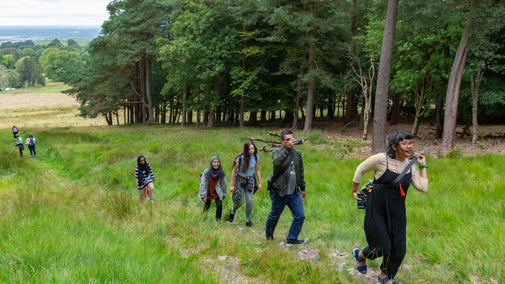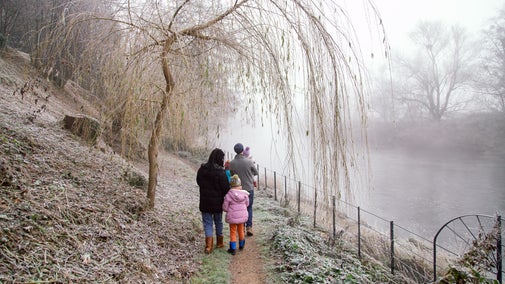Whiteleaf and the Hampdens walk
Oxfordshire, Buckinghamshire & Berkshire
This walk will take you from beautiful Chiltern woodlands near Whiteleaf, past the famous Grim's Ditch, to the grounds of Hampden House. You'll then wind your way through wooded hillsides and the isolated village of Little Hampden, before returning to Whiteleaf Hill and a wonderful viewpoint over the Aylesbury Vale.
Near to
Chilterns CountrysideStart point
Bucks County Council car park at Whiteleaf Hill. Grid ref: SP823036.Trail information
*Paths and tracks, with some moderate climbs and one steep ascent. For further details, please see Terrain section.
**People with limited mobility may find this walk challenging. For further details, please see section marked Access.
***Dogs are welcome under close control. For further details, please see section marked Facilities.
Take care when crossing roads
You'll encounter a number of roads on this route. Please take care and look both ways before crossing.
More near here
Coombe Hill and Chequers trail
Enjoy a moderately energetic circular walk from Coombe Hill, taking in views across the Aylesbury Vale. You'll wander through woodlands, past rare chalk grassland and the pretty village of Ellesborough.

Chiltern Hills three-in-one walk
Discover a challenging 8½-mile scenic walk linking three National Trust places in the Chiltern Hills: West Wycombe, Bradenham and Hughenden. Longer and shorter routes can be completed depending on your choice.

Hambleden and Pheasant’s Hill trail
Visit rural hamlets, stroll through beech woods and enjoy views across the Hambleden Valley on the Hambleden and Pheasant’s Hill trail.

Watlington Hill short walk
This walk offers memorable views over the Vale of Oxford and Chiltern Escarpment, as well as abundant wildlife and birdlife amongst the site's chalk grassland and woodland habitats.

Get in touch
Chilterns Countryside, c/o Hughenden estate, High Wycombe, Buckinghamshire, HP14 4LA
Our partners

We’ve partnered with Cotswold Outdoor to help everyone make the most of their time outdoors in the places we care for.
You might also be interested in
Walking
Explore some of the finest landscapes in our care on coastal paths, accessible trails, woodland walks and everything in between. Find the best places to walk near you.

Walking in Oxfordshire, Buckinghamshire and Berkshire
From gentle strolls for little legs to longer hikes through the rolling Chiltern hills, these are some of the best walks in Oxfordshire, Buckinghamshire and Berkshire.

Cotswold Outdoor: our exclusive walking partner
Learn about the National Trust’s ongoing partnership with Cotswold Outdoor. Find out how they help us care for precious places and the exclusive discount available for National Trust supporters.

Follow the Countryside Code
Help to look after National Trust places by observing a few simple guidelines during your visit and following the Countryside Code.

Staying safe at National Trust places
The special places in National Trust care sometimes come with a few risks for visitors, be it coastline or countryside. Find out how to keep safe throughout your visits.

History of the Chilterns Countryside
The countryside of the Chiltern Hills is steeped in history. Explore the past of some of our sites, from royal visits to ancient hillforts.

Things to see and do in the Chilterns Countryside
Discover the countryside sites of the Chilterns. Find the best viewpoints, walk through ancient woodland or pick a quiet spot to watch for wildlife.

Our work in the Chilterns countryside
Find out more about our work to manage ancient woodlands, hedgerows and meadows to create a diverse habitat that enables a wide variety of wildlife to thrive.

